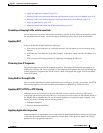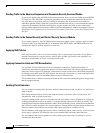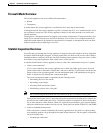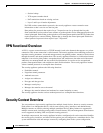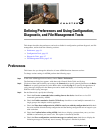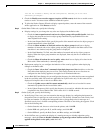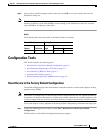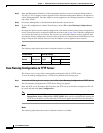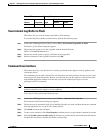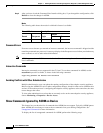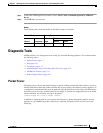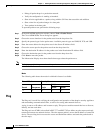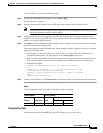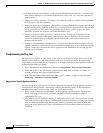
3-3
Cisco ASDM User Guide
OL-16647-01
Chapter 3 Defining Preferences and Using Configuration, Diagnostic, and File Management Tools
Configuration Tools
Step 6 After you have specified settings on these three tabs, click OK to save your settings and close the
Preferences dialog box.
Note Each time that you check or uncheck a preferences setting, the change is saved to the .conf file and
becomes available to all the other ASDM sessions running on the workstation at the time. You must
restart ASDM for all changes to take effect.
Modes
The following table shows the modes in which this feature is available:
Configuration Tools
This section includes the following topics:
• Reset Device to the Factory Default Configuration, page 3-3
• Save Running Configuration to TFTP Server, page 3-4
• Save Internal Log Buffer to Flash, page 3-5
• Command Line Interface, page 3-5
• Show Commands Ignored by ASDM on Device, page 3-6
Reset Device to the Factory Default Configuration
The default configuration provides the minimum commands required to connect to the adaptive security
appliance using ASDM.
Note This feature is available only for routed firewall mode; transparent mode does not support IP addresses
for interfaces. In addition, this feature is available only in single context mode; a security appliance with
a cleared configuration does not have any defined contexts to configure automatically using this feature.
To reset the adaptive security appliance to the factory default configuration, perform the following steps:
Step 1 In the main ASDM application window, choose File > Reset Device to the Factory Default
Configuration.
The Reset Device to the Default Configuration dialog box appears.
Firewall Mode Security Context
Routed Transparent Single
Multiple
Context System
• • • • •



